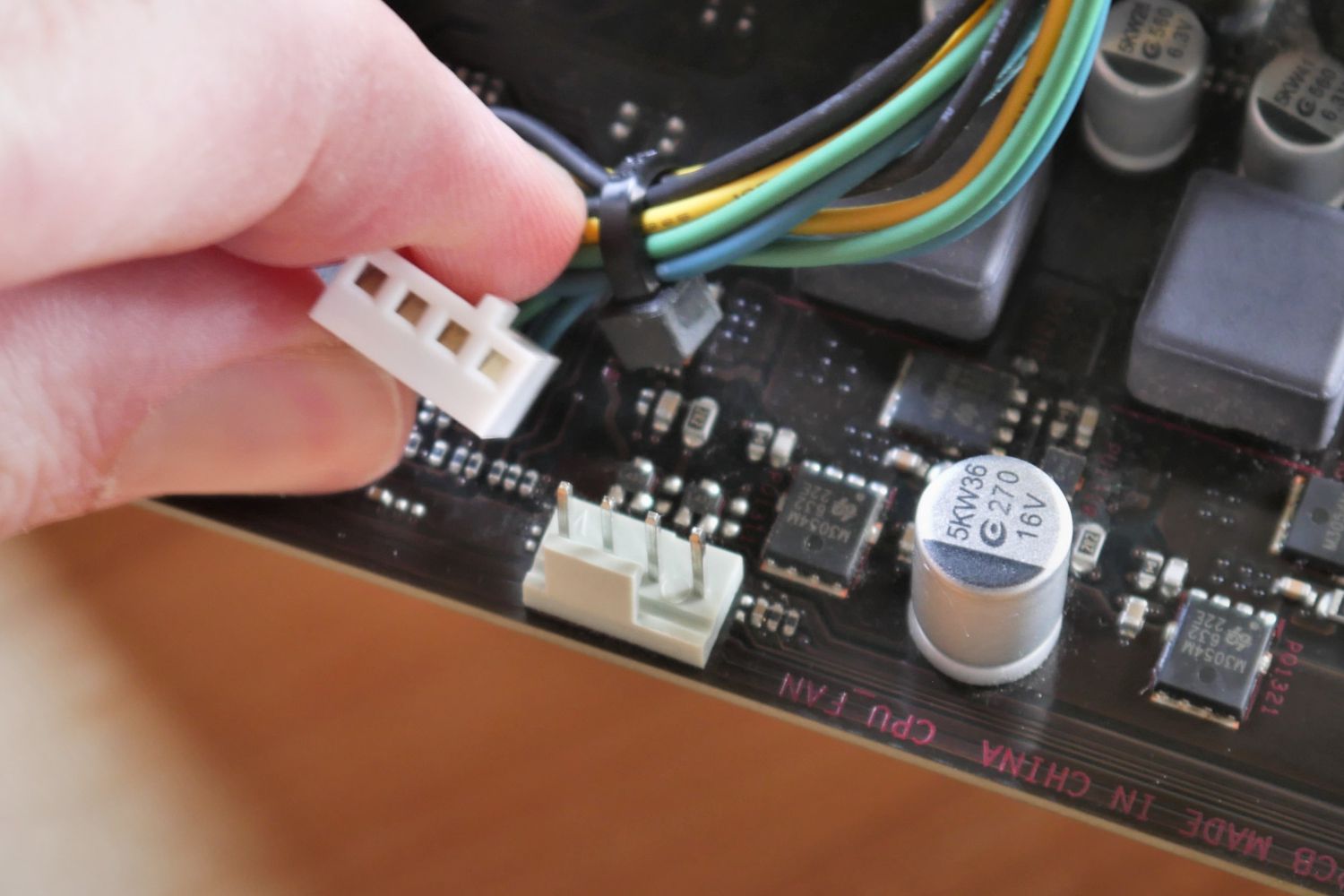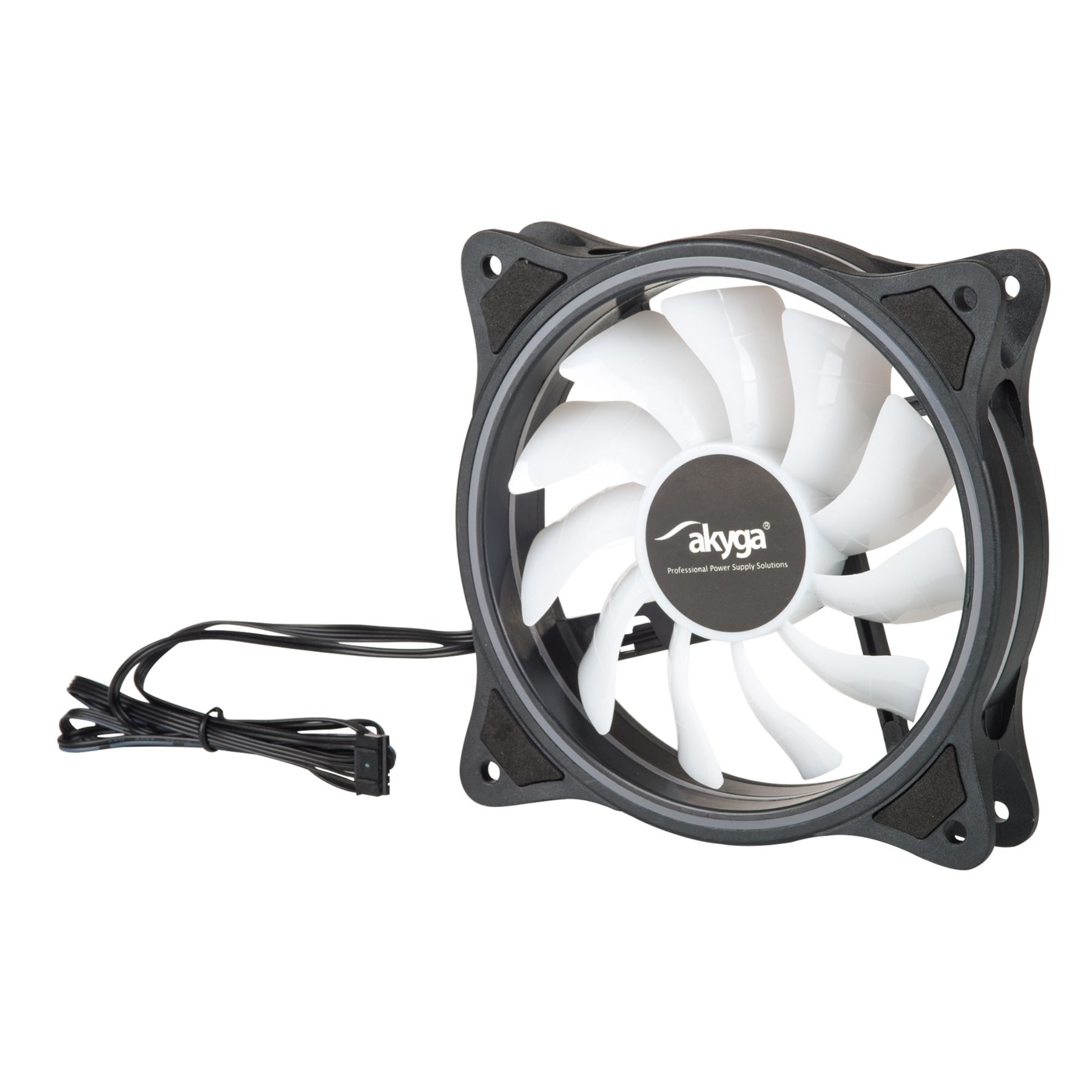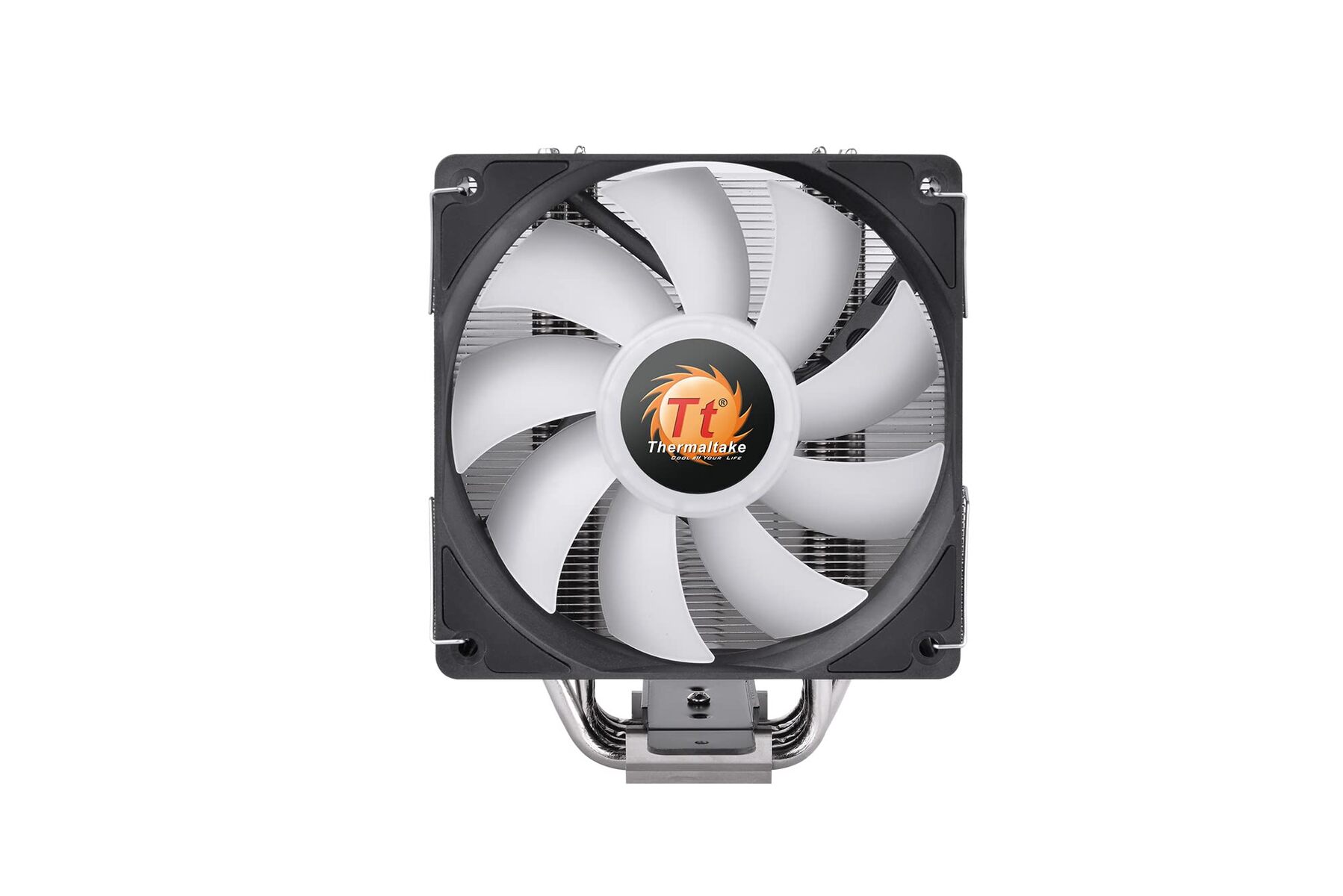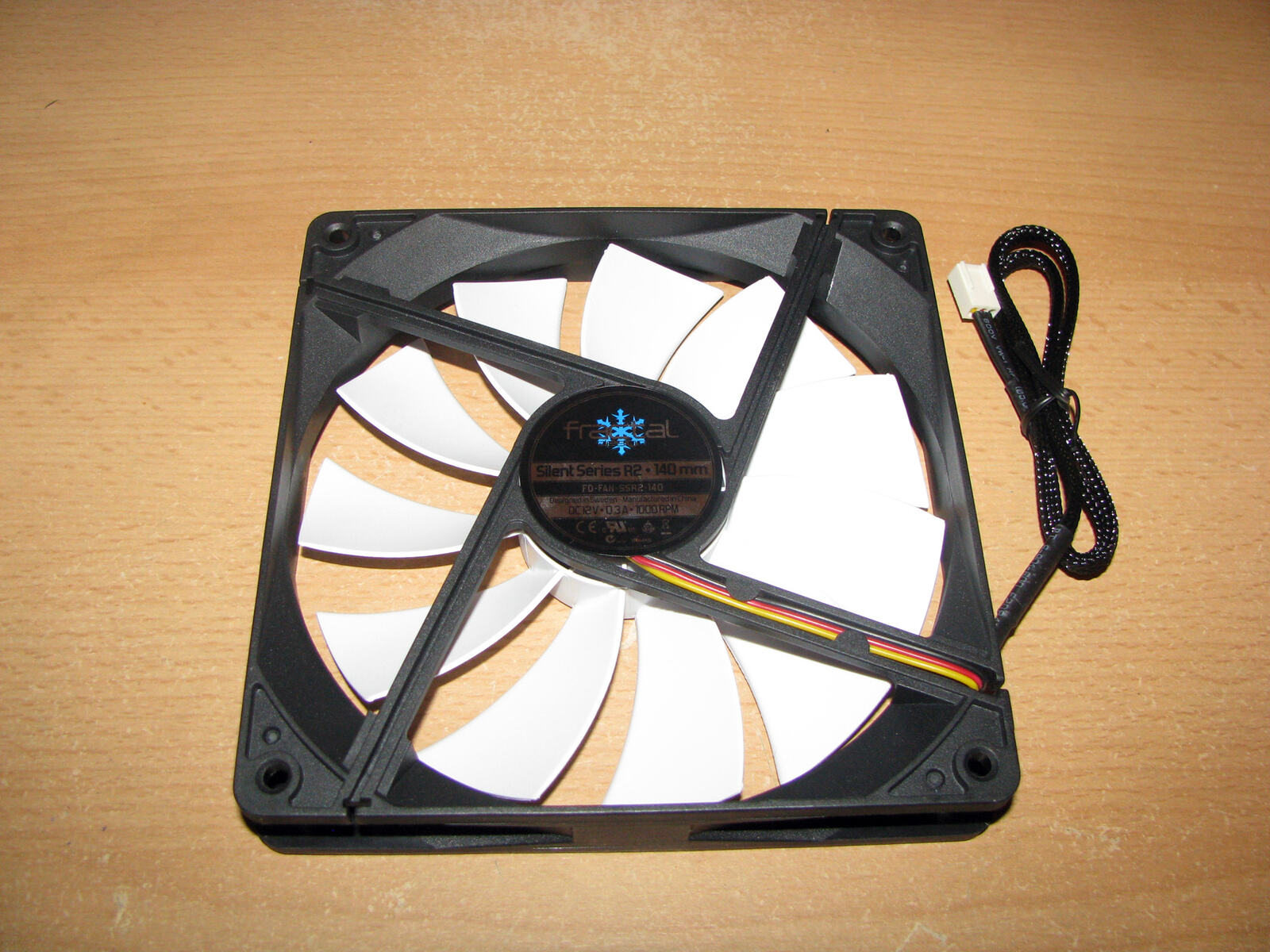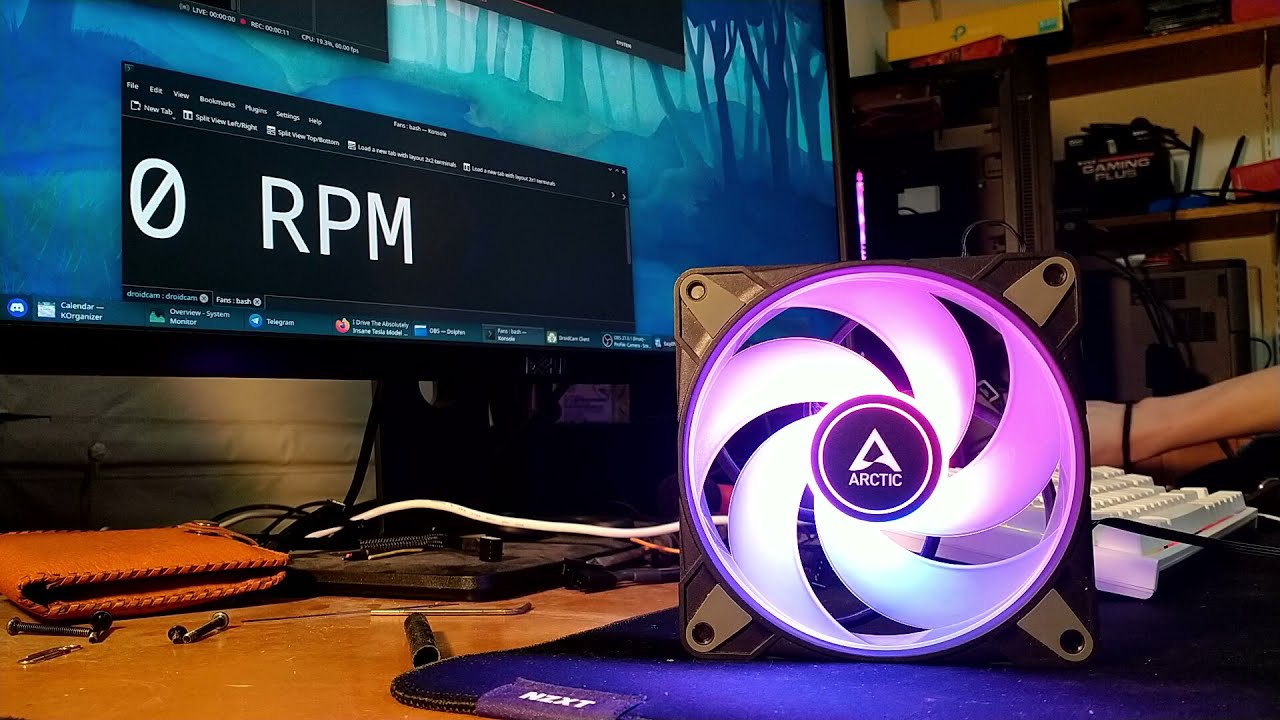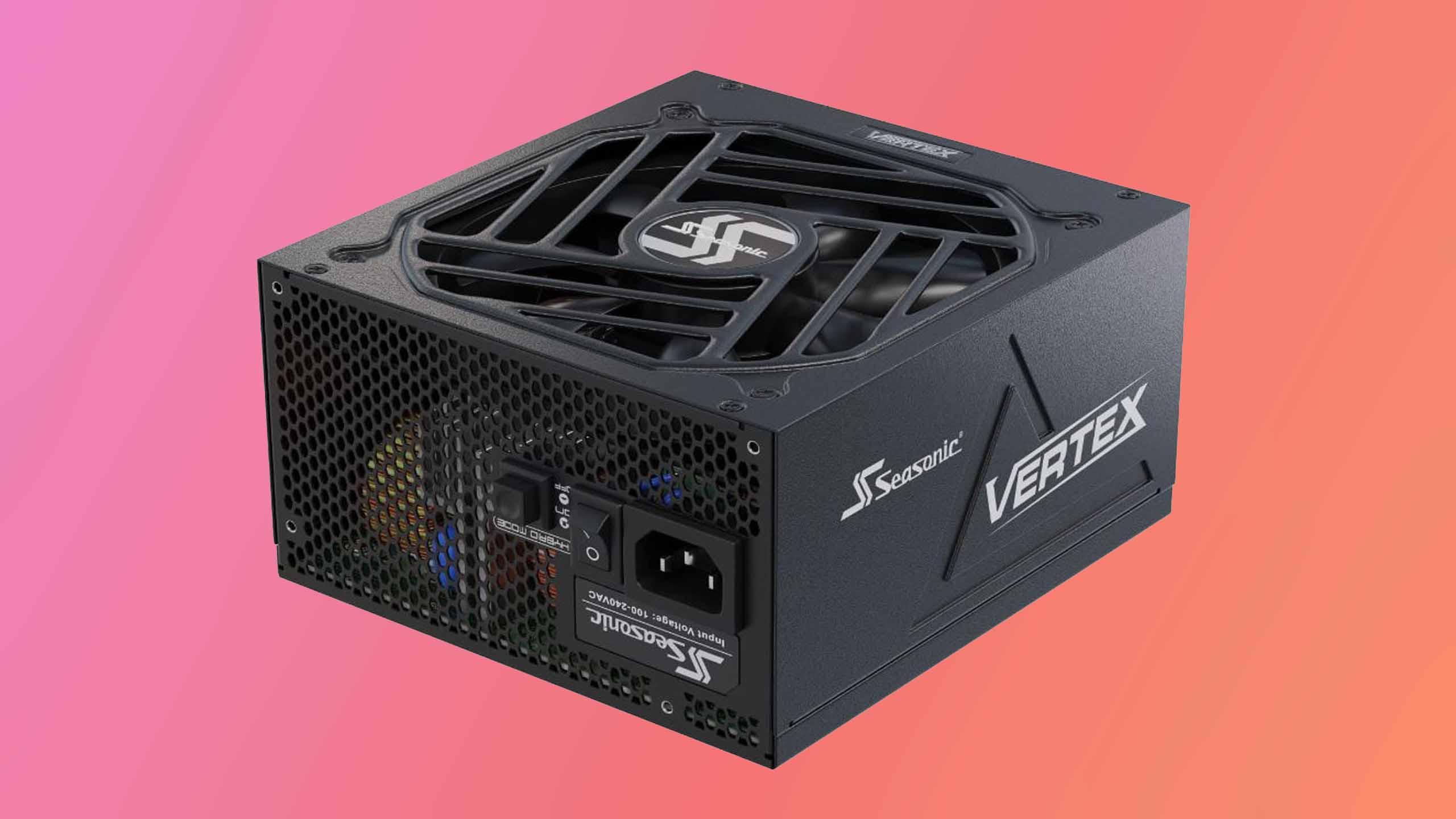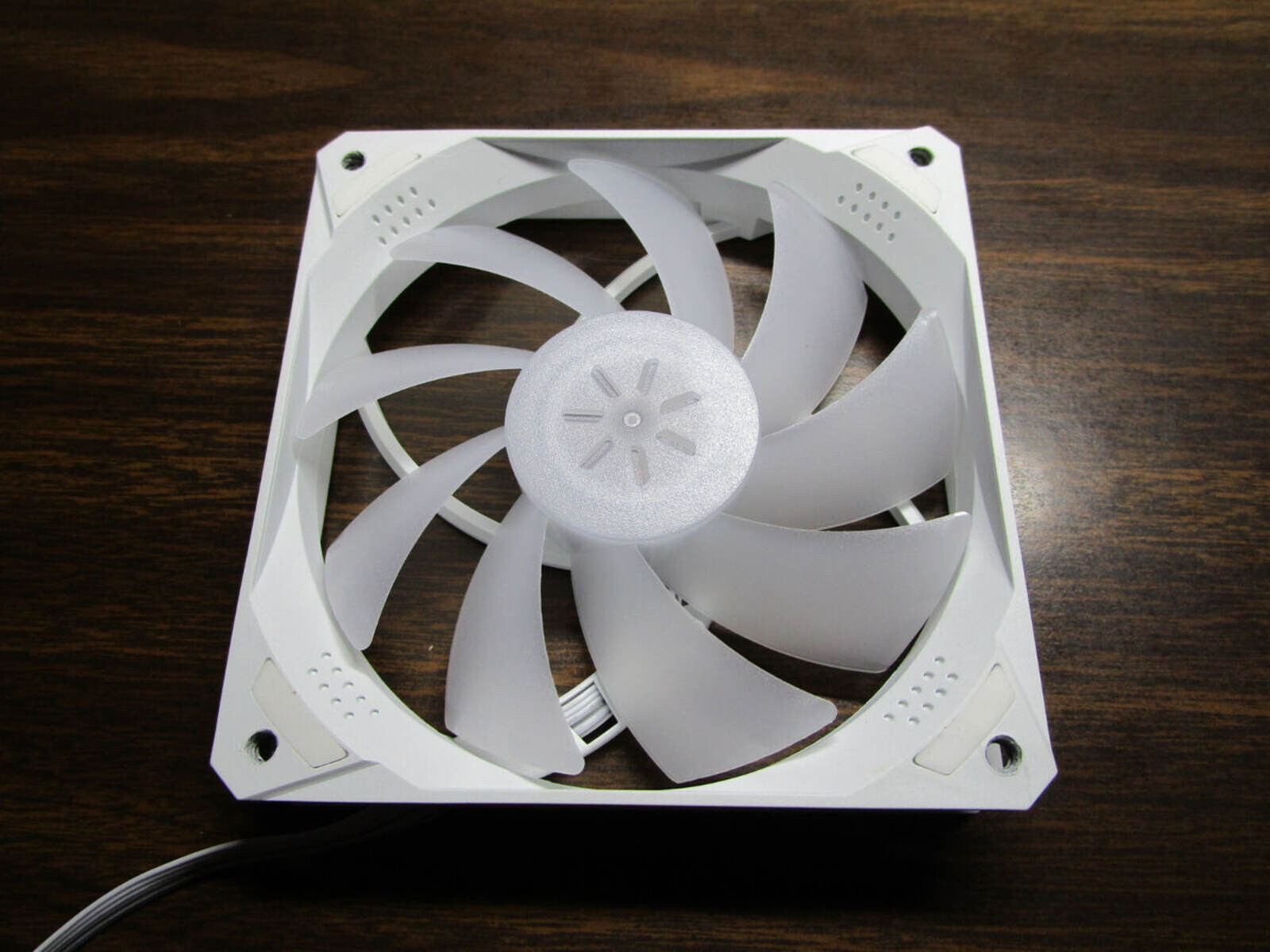Introduction
Case fans play a crucial role in maintaining optimal airflow and cooling inside a computer case. They help dissipate heat generated by various components, ensuring stable performance and longevity. However, one often overlooked aspect of case fans is the length of their cables. The length of the case fan cables can greatly impact the cable management and overall aesthetics of a computer build.
Whether you’re a seasoned PC builder or just getting started, it’s important to understand the factors that come into play when considering the length of case fan cables. In this article, we will delve into the different lengths of case fan cables, the benefits and downsides they offer, and how to extend them if needed.
Before we dive into the specifics, it’s crucial to note that case fan cables come in various lengths, typically ranging from 30cm to 60cm. These cables are used to connect the case fans to the motherboard or fan controller, allowing them to receive power and communicate with the system.
While some may assume that longer cables are always better, this is not necessarily the case. Depending on the size and layout of your computer case, as well as your cable management preferences, either shorter or longer case fan cables may be more suitable.
So, let’s explore the different lengths of case fan cables, the factors to consider when choosing them, and the pros and cons of longer and shorter cables. By the end of this article, you will have a clear understanding of how to make an informed decision when it comes to case fan cable length.
Understanding Case Fan Cables
Case fan cables are the wiring connections used to power and control the case fans in a computer system. They typically consist of multiple wires enclosed in a protective coating, with connector ends that attach to the fan headers on the motherboard or fan controller.
These cables serve two primary functions: providing power for the case fans and facilitating communication between the fans and the motherboard. The power wires deliver the necessary voltage for the fans to operate, while the communication wires allow the motherboard to detect and control the fan speed.
In addition to the power and communication wires, case fan cables often include a tachometer wire. This wire measures the fan’s rotational speed and relays the information back to the motherboard for monitoring purposes. This feature enables the system to maintain optimal cooling performance by adjusting the fan speed as needed.
Case fan cables come in various lengths, usually ranging from 30cm to 60cm. The length of the cable determines how far the case fan can be positioned away from the motherboard or fan controller. It is important to choose the appropriate cable length based on the size and layout of your computer case, as well as your cable management preferences.
When selecting case fan cables, it is essential to consider the connectors at each end. Most modern case fans utilize a standard 3 or 4-pin connector, with the 3-pin being the most common. These connectors are designed to plug into corresponding fan headers on the motherboard or fan controller.
The 3-pin connector consists of two power pins and one tachometer pin. This configuration allows the fan to receive power and provide rotational speed information to the motherboard. The 4-pin connector, commonly known as a PWM connector, includes an additional pin for pulse-width modulation control, which enables more precise fan speed regulation.
Understanding the structure and functionality of case fan cables is crucial for making informed decisions when it comes to choosing the appropriate cable length and connectors. In the following sections, we will examine the different lengths of case fan cables and the factors to consider when selecting them.
Common Lengths of Case Fan Cables
Case fan cables are available in various lengths to accommodate different computer case sizes and configurations. The most common lengths of case fan cables range from 30cm to 60cm, with each length serving different purposes and offering specific advantages.
The shortest length, 30cm, is ideal for small form factor cases or cases with a compact layout. These shorter cables help minimize clutter and make cable management more manageable in tight spaces. If your computer case is small or you prefer a clean and organized interior, opting for 30cm case fan cables is a practical choice.
On the other hand, if you have a larger computer case with spacious interiors, or if you prioritize flexibility in fan placement, longer case fan cables may be more suitable. The standard length of 60cm enables you to position fans in various locations within the case, providing greater cooling options and potential for improved airflow.
The length of the case fan cables also depends on the distance between the fan headers on the motherboard or fan controller and the desired fan placement. It’s important to measure this distance accurately before purchasing the cables to ensure compatibility and proper cable management.
Additionally, it’s worth noting that some case fan cables have detachable extensions or are available in custom lengths for added convenience. These extensions or custom cables offer more flexibility in cable routing and can be particularly useful if you have unique case requirements or specific fan placement preferences.
When selecting the appropriate length of case fan cables, consider not only the size and layout of your computer case but also the cable management options and fan placement possibilities. By choosing the right length, you can optimize the cooling performance of your system while maintaining a neat and organized interior.
Understanding the common lengths of case fan cables is an essential step in finding the right cables for your computer case. In the next section, we will explore the factors to consider when choosing the length of case fan cables for your specific needs.
Factors to Consider when Choosing Case Fan Cables
Choosing the appropriate length of case fan cables requires consideration of several factors to ensure compatibility, ease of installation, and optimal cable management. Here are the key factors to keep in mind:
- Computer Case Size and Layout: The size and layout of your computer case play a crucial role in determining the length of case fan cables needed. Smaller cases may require shorter cables to avoid excessive cable clutter, while larger cases with spacious interiors can accommodate longer cables for more flexible fan placement.
- Distance between Fan Headers and Fan Placement: Measure the distance between the fan headers on the motherboard or fan controller and the desired fan placement locations. Choose cables that are long enough to reach without excessive slack but not so long that they create unnecessary cable congestion.
- Cable Management: Consider your cable management preferences and goals. If you prioritize a clean and clutter-free interior, opt for shorter cables that can be neatly routed and secured. On the other hand, if you have a meticulous cable management strategy or prefer flexibility in fan placement, longer cables may be more suitable.
- Future Upgradability: If you anticipate future upgrades that may lead to changes in fan placement or additional fans, it is wise to choose slightly longer case fan cables to accommodate these potential changes. This allows for easier modifications and reduces the need for cable replacements in the future.
- Cable Quality: Consider the quality of the cables. Opt for cables made from durable materials to ensure reliable performance and longevity. This helps minimize the risk of cable failures or connectivity issues that may impact fan operation.
By taking these factors into account, you can make informed decisions when choosing the appropriate length of case fan cables for your specific needs. It is worth investing time in careful planning and consideration to ensure an efficient and visually appealing cable management solution.
Next, we will explore the benefits and downsides of both longer and shorter case fan cables to further assist you in making the right choice.
Benefits of Longer Case Fan Cables
Opting for longer case fan cables offers several advantages that can enhance the flexibility and functionality of your computer system. Here are some key benefits of using longer case fan cables:
- Greater Fan Placement Options: Longer cables provide more freedom in placing the case fans within the computer case. This flexibility allows for strategic positioning to achieve optimal airflow and cooling performance.
- Improved Cable Management: Longer cables can provide better cable management opportunities, especially in larger computer cases. They enable you to route the cables more neatly and efficiently, reducing cable clutter and improving overall aesthetics.
- Accommodation of Custom Fan Configurations: If you plan to incorporate custom fan configurations, such as adding additional fans or creating complex cooling setups, longer case fan cables are essential. They allow you to connect fans that may be located further away from the fan headers.
- Easier System Maintenance and Upgrades: Longer cables make it significantly easier to access and work on components, facilitating maintenance tasks and future upgrades. They provide more room to maneuver, minimizing the need for cable rearrangements or disconnecting cables during hardware changes.
- Reduced Risk of Cable Strain: Longer cables reduce the risk of cable strain or tension, which can occur when short cables are stretched tightly to reach the fan headers. Cable strain may lead to connectivity issues or improper fan operation, potentially compromising system performance.
Considering these benefits, longer case fan cables are especially advantageous for users who prioritize cable management, want flexibility in fan placement, have larger computer cases, or plan to make future upgrades to their system.
However, it’s important to note that longer case fan cables may not be necessary or desirable for every situation. Next, we’ll explore some of the downsides associated with using longer case fan cables to provide a balanced perspective.
Downsides of Longer Case Fan Cables
While longer case fan cables offer several benefits, it’s important to consider the potential drawbacks that come with their use. Here are some downsides to using longer case fan cables:
- Cable Clutter: Longer cables can result in increased cable clutter, especially if not properly managed. Excess cable length may require additional effort and creativity to route and secure the cables to maintain a clean and organized interior.
- Signal Degradation: Longer cables have a higher chance of signal degradation, especially if the quality of the cables is poor. Signal degradation can impact the communication between the fan and the motherboard, potentially leading to inconsistent fan speed control or incorrect temperature readings.
- Potential Interference: Longer cables can be more susceptible to electromagnetic interference (EMI). If the cables are not adequately shielded, they may pick up unwanted signals from other components or devices, potentially disrupting the proper functioning of the case fans.
- Cost: Longer case fan cables often come at a slightly higher cost compared to their shorter counterparts. If you have a limited budget and do not require the additional length, opting for shorter cables may be a more cost-effective choice.
- Management Challenges: Longer cables can present challenges in terms of cable management, especially in smaller computer cases or cases with limited space for cable routing. They may require more effort to route and secure properly, potentially impacting the overall aesthetics and airflow optimization.
Considering these downsides, it’s important to evaluate whether the benefits of longer case fan cables outweigh the potential drawbacks in your specific circumstances. You may decide that the advantages of increased flexibility and functionality outweigh the challenges posed by cable management and potential signal degradation.
However, if you have a smaller computer case, prioritize a minimalistic and clutter-free interior, or have limited space for cable management, it may be more practical to opt for shorter case fan cables.
Now that we have explored the benefits and downsides of longer case fan cables, let’s turn our attention to the advantages and disadvantages of using shorter case fan cables in the next section.
Benefits of Shorter Case Fan Cables
Shorter case fan cables offer several advantages that can be beneficial in specific scenarios. Here are some key benefits of using shorter case fan cables:
- Reduced Cable Clutter: Shorter cables result in less cable clutter within the computer case. They minimize excess cable length and make cable management more straightforward, particularly in smaller cases or cases with limited space for cable routing.
- Easier Installation: Shorter cables are easier to handle and install, as they do not require extensive cable routing or excessive cable management. This can save time and effort during the building or upgrading process, ideal for users who prefer a quick and hassle-free installation experience.
- Lower Cost: Shorter case fan cables are generally more affordable compared to their longer counterparts. If you are on a tight budget or do not require the additional length, opting for shorter cables can be a cost-effective choice without sacrificing functionality.
- Minimized Cable Strain: Shorter cables reduce the risk of cable strain, as they do not need to be stretched tightly to connect the fans to the motherboard or fan controller. This helps prevent potential connectivity issues and ensures proper fan functionality.
- Simplified Cable Management: Shorter cables make cable management more manageable, especially for users who prefer a clean and organized interior. With less excess cable length, routing and securing the cables neatly becomes easier, resulting in an aesthetically pleasing system.
Considering these benefits, shorter case fan cables are advantageous for users who prioritize a minimalist and clutter-free interior, have smaller computer cases, or prefer a straightforward installation process. They offer an efficient and cost-effective solution without compromising on functionality.
However, it’s important to assess your specific needs and the layout of your computer case before deciding on shorter case fan cables. If you have a larger case, complex cooling requirements, or prefer flexibility in fan placement, longer cables may be more suitable.
Now that we have explored the benefits of shorter case fan cables, let’s move on to discussing the potential downsides associated with their use.
Downsides of Shorter Case Fan Cables
While shorter case fan cables offer advantages, they also have potential downsides that should be considered when making a decision. Here are some downsides of using shorter case fan cables:
- Limited Fan Placement Options: Shorter cables may limit the positioning of case fans within the computer case. This can reduce flexibility in optimizing airflow and cooling performance, especially in larger cases or those with complex cooling configurations.
- Challenging Cable Management: Shorter cables may pose challenges in terms of cable management, particularly if you have a larger case with ample space for cable routing. The limited length may require creative routing techniques to achieve a clean and organized cable layout.
- Inconvenience during System Maintenance: With shorter cables, accessing and working on components during maintenance or future upgrades can be more challenging. The lack of cable length may require disconnecting cables or rearranging them, adding complexity and potentially increasing downtime.
- Potential Cable Tension: Shorter cables may lead to cable tension or strain if they need to be stretched tightly to reach the fan headers. This can negatively affect cable longevity and cause connectivity issues, potentially impacting fan performance.
- Reduced Flexibility for Future Changes: If you anticipate future upgrades or changes to your computer system that may require different fan placements, shorter cables may limit your options. This can necessitate the purchase of additional cables or extensions to accommodate these changes.
Considering these downsides, it’s essential to evaluate whether the benefits of shorter case fan cables outweigh the potential drawbacks in your specific situation. Smaller computer cases or users who prioritize a minimalist interior without complex cooling requirements may find that the advantages outweigh these limitations.
However, for users with larger cases, custom cooling setups, or a preference for flexibility in fan placement, longer case fan cables may be more appropriate.
Now that we have examined the benefits and downsides of shorter case fan cables, let’s move on to discussing how to extend case fan cables if needed.
Extending Case Fan Cables
In some cases, you may find that the length of your case fan cables is not sufficient for your desired fan placement. Fortunately, there are options available to extend the reach of your case fan cables. Here are a few methods you can use to extend case fan cables:
- Cable Extensions: Cable extensions are an easy and cost-effective way to extend the length of your case fan cables. These extensions typically come in various lengths and are designed to match the connectors of your existing case fan cables. By attaching a cable extension between the fan and the existing cable, you can effectively increase the overall length.
- Fan Splitter Cables: In situations where you need to connect multiple fans to a single fan header and also require extra length, fan splitter cables can be a suitable solution. These cables have one female connector that plugs into the fan header and multiple male connectors to connect the fans. This allows you to both extend the cable length and connect multiple fans simultaneously.
- Custom Cable Modding: For more advanced users, custom cable modding is an option. This involves splicing and soldering additional wire length to the existing case fan cables to achieve the desired extension. This method requires careful attention to detail and some technical expertise to ensure proper functionality and maintain signal integrity.
When extending case fan cables, it’s important to ensure that the added length does not cause signal degradation or voltage drop. Using high-quality extension cables, maintaining proper cable routing and insulation, and avoiding excessive cable tension are crucial to maintaining optimal performance.
When deciding to extend your case fan cables, keep in mind that excessive cable length or multiple extensions may add to cable clutter and potentially affect cable management. It’s essential to strike a balance between cable extension and maintaining a neat and organized interior.
Before attempting any cable extensions or modifications, it’s recommended to consult the user manual of your case fans or seek advice from knowledgeable sources to ensure compatibility and minimize any potential risks.
With these methods at your disposal, you can effectively extend the length of your case fan cables to accommodate your desired fan placement without compromising functionality or cable management.
Now that we’ve explored various methods for extending case fan cables, let’s wrap up this article with a summary of the key points discussed.
Conclusion
Choosing the appropriate length of case fan cables is an important consideration when building or upgrading a computer system. Whether you opt for longer or shorter cables depends on various factors, including the size and layout of your computer case, cable management preferences, and future upgradeability.
Longer case fan cables offer benefits such as greater fan placement options, improved cable management, and easier system maintenance. However, they may also introduce cable clutter and potential signal degradation. Shorter case fan cables, on the other hand, minimize cable clutter, simplify installation, and are more budget-friendly. However, they may limit fan placement options and pose challenges in cable management.
If the stock cable length is not sufficient for your needs, you can extend case fan cables using cable extensions, fan splitter cables, or through custom cable modding. These solutions can provide the additional length required for optimal fan placement without sacrificing functionality.
Ultimately, the right choice of case fan cable length depends on your specific requirements and preferences. Take into account the size and layout of your computer case, cable management goals, and future upgrade plans to make an informed decision that best suits your needs.
Remember, proper cable management and ensuring quality cables are crucial in maintaining reliable performance and minimizing potential issues with your case fans.
By carefully considering these factors and taking the necessary steps to extend or choose the appropriate length of case fan cables, you can optimize the airflow and cooling in your computer system, enhancing the overall performance and longevity of your components.







